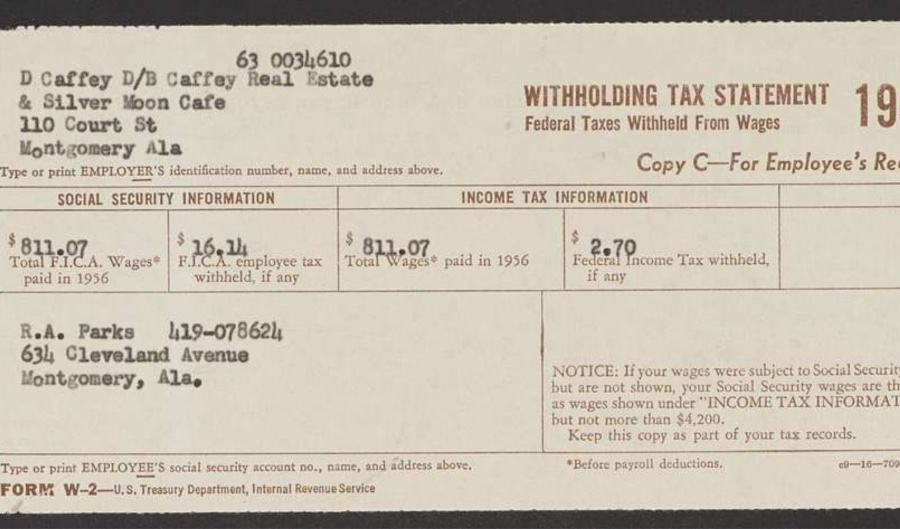While traditional genealogy research often relies on census records, birth certificates, and other official documents, tax records can also offer a wealth of information for those seeking to uncover their family history.
Tax records can reveal important details about our ancestors’ occupations, property ownership, and economic status, providing a unique window into their lives and experiences. In this article, we will explore how to use these records for genealogy research, including tips for finding and analysing them, as well as examples of how they have been used to trace ancestry in real-life cases.
Understanding Tax Records and How They Can Help You Trace Your Ancestry
Tax records are a valuable resource for anyone interested in tracing their ancestry. These records provide a wealth of information about our ancestors’ lives, including their occupations, property ownership, and economic status. By examining tax records, genealogists can gain insights into the lives and experiences of their ancestors, and uncover details that might be difficult to find through other sources.
One of the key benefits of using tax records for genealogy research is that they can provide information about individuals who might not have been recorded in other official documents. For example, they might include information about people who were not property owners or who were not eligible to vote. They can also provide details about individuals who may have been living with or working for other people, such as apprentices or servants.
Tax records can also help genealogists to track changes in their ancestors’ economic status over time. By examining them from different years, researchers can see how much property their ancestors owned, how much they were taxed, and whether they experienced any financial difficulties. This information can provide valuable insights into the economic and social conditions of the time, and can help genealogists to understand the broader historical context in which their ancestors lived.
In addition to providing information about individuals, tax records can also reveal details about communities and regions. By examining them from different areas, genealogists can gain insights into local economies, land use patterns, and social hierarchies. This information can be particularly useful for those interested in tracing the history of a particular region or community.
Finding and Accessing Tax Records: Tips and Resources
If you’re interested in using tax records for genealogy research, the first step is to locate these records. While they can be a valuable resource, they can also be challenging to find and access. Here are some tips and resources to help you get started:
- Start with local archives and historical societies. Many tax records are held by local archives and historical societies, particularly those that focus on genealogy or local history. Check with these organisations to see if they have tax records for the area and time period you’re interested in.
- Search online databases. Many tax records have been digitised and are available through online databases. Websites such as Ancestry.com, FamilySearch.org, and Fold3.com offer access to a wide range of tax records from across the United States.
- Check with state and national archives. In some cases, tax records may be held by state or national archives. Check with these organisations to see if they have any records that might be relevant to your research.
- Consult with local historians and genealogists. Local historians and genealogists can be a valuable resource for finding them. They may be able to point you in the direction of local archives or other resources that can help you locate the records you need.
- Use online forums and message boards. Online forums and message boards can be a great way to connect with other genealogists who may have tips or advice on finding tax records. Try searching for forums related to genealogy research in the geographic area you’re interested in.
Once you’ve located the ones you need, you’ll need to determine how to access them. In some cases, records may be available online and can be accessed from the comfort of your own home. In other cases, you may need to visit a local archive or historical society to view the records in person.
By following these tips and resources, you can increase your chances of finding and accessing tax records for your genealogy research. With a little bit of effort and persistence, you can unlock a wealth of information about your ancestors and their lives.
Analysing the Records: What to Look for and How to Interpret the Information
Once you have located tax records for your ancestors, the next step is to analyse them to extract meaningful information. Analysing them can provide valuable insights into the lives and experiences of your ancestors, but it can also be challenging if you’re not sure what to look for. Here are some tips to help:
- Understand the format. Tax records can take many forms, depending on the time period and geographic location. Make sure you understand the format of the tax record you’re looking at before you begin analysing it. This will help you to identify the key pieces of information and understand how the data is organised.
- Look for key pieces of information. Tax records can provide a wealth of information about your ancestors, including their names, occupations, property ownership, and tax obligations. Look for these key pieces of information and record them in a separate document for easy reference.
- Compare tax records over time. One of the key benefits of these records is that they allow you to track changes in your ancestors’ lives over time. Compare tax records from different years to see if your ancestors’ property ownership or tax obligations changed. This can provide valuable insights into their economic and social status.
- Pay attention to details. Small details can provide important clues about your ancestors’ lives. Look for details such as property descriptions, property values, and tax rates. These details can help you to paint a more complete picture of your ancestors’ lives.
- Consider the broader historical context. Tax records are not just a source of information about your ancestors, but also about the broader historical context in which they lived. Consider the historical events and social trends of the time period in which they were created. This can help you to understand the broader social and economic forces that shaped your ancestors’ lives.
Case Studies
To give you a sense of what’s possible, here are some case studies that illustrate how they can be used to trace family history:
- Property Ownership: In one case study, a genealogist used tax records to trace the property ownership history of a particular parcel of land in rural New England. By looking at tax records from the early 1800s to the mid-1900s, the genealogist was able to trace the property ownership back to its original owner, who was one of the first settlers in the area. This research provided a rich understanding of the history of the property and the people who lived on it over the course of two centuries.
- Immigration History: In another case study, a researcher used the records to trace the immigration history of a family that had settled in the United States in the early 1900s. By looking at tax records from the time period, the researcher was able to identify the family’s first residence in the United States and track their movement over several decades as they bought and sold property in different parts of the country. This research provided insights into the family’s migration patterns and their economic status over time.
- Business Ownership: In a third case study, a genealogist used tax records to trace the business ownership history of a family in a small town in the Midwest. By looking at tax records from the early 1900s to the mid-1900s, the genealogist was able to identify the family’s various business ventures, including a grocery store, a farm, and a trucking company. This research provided a detailed understanding of the family’s entrepreneurial spirit and their economic contributions to the community over several generations.
In each of these case studies, these records provided valuable insights into the lives and experiences of our ancestors. By tracing property ownership, immigration history, and business ownership, these researchers were able to gain a deeper understanding of the economic and social forces that shaped their ancestors’ lives.
Common Challenges and Limitations
Here are some of the most common challenges and limitations you may encounter:
- Incomplete Records: One of the biggest challenges of using records is that they may be incomplete or missing. Tax records were often created by local officials, who may not have kept meticulous records or who may have lost or destroyed records over time. As a result, there may be gaps that make it difficult to trace your ancestors’ history.
- Limited Information: Tax records can provide a wealth of information about your ancestors’ property ownership and tax obligations, but they may not provide much other information about their lives. For example, they may not provide information about your ancestors’ occupations, family relationships, or religious affiliations. This can make it difficult to paint a complete picture of your ancestors’ lives.
- Inconsistent Terminology: Tax records may use inconsistent terminology or abbreviations that can be difficult to interpret. For example, property descriptions may use terms that are no longer in use, or they may use abbreviations that are not easily decipherable. This can make it challenging to understand the information contained in the tax records.
- Language Barriers: Depending on the location and time period, tax records may be written in a language other than English. This can make it difficult to access and interpret the records, especially if you do not speak the language.
- Interpretation Bias: Finally, it’s important to be aware that interpreting the records requires a certain degree of subjectivity. Different researchers may interpret the same tax records differently, based on their own biases and assumptions. It’s important to approach tax records with an open mind and to be aware of your own biases and assumptions.
Incomplete records, limited information, inconsistent terminology, language barriers, and interpretation bias are all common challenges you may encounter when using tax records for genealogy research. By being aware of these challenges and limitations, you can approach the task with a realistic understanding of their strengths and weaknesses, and use them effectively in your research.
Conclusion
In conclusion, tracing your ancestry through tax records can be a fascinating and rewarding journey, but it also requires patience, diligence, and a willingness to confront the challenges and limitations inherent in this type of research. By understanding the basics, finding and accessing relevant records, analysing the information contained in the records, and being aware of the common challenges and limitations, you can use tax records effectively in your genealogy research. Whether you’re a seasoned genealogist or just starting out, tax records can provide valuable insights into your ancestors’ lives and experiences, helping you to build a richer and more detailed picture of your family history.
Image Source:
- Tax record: Picryl





